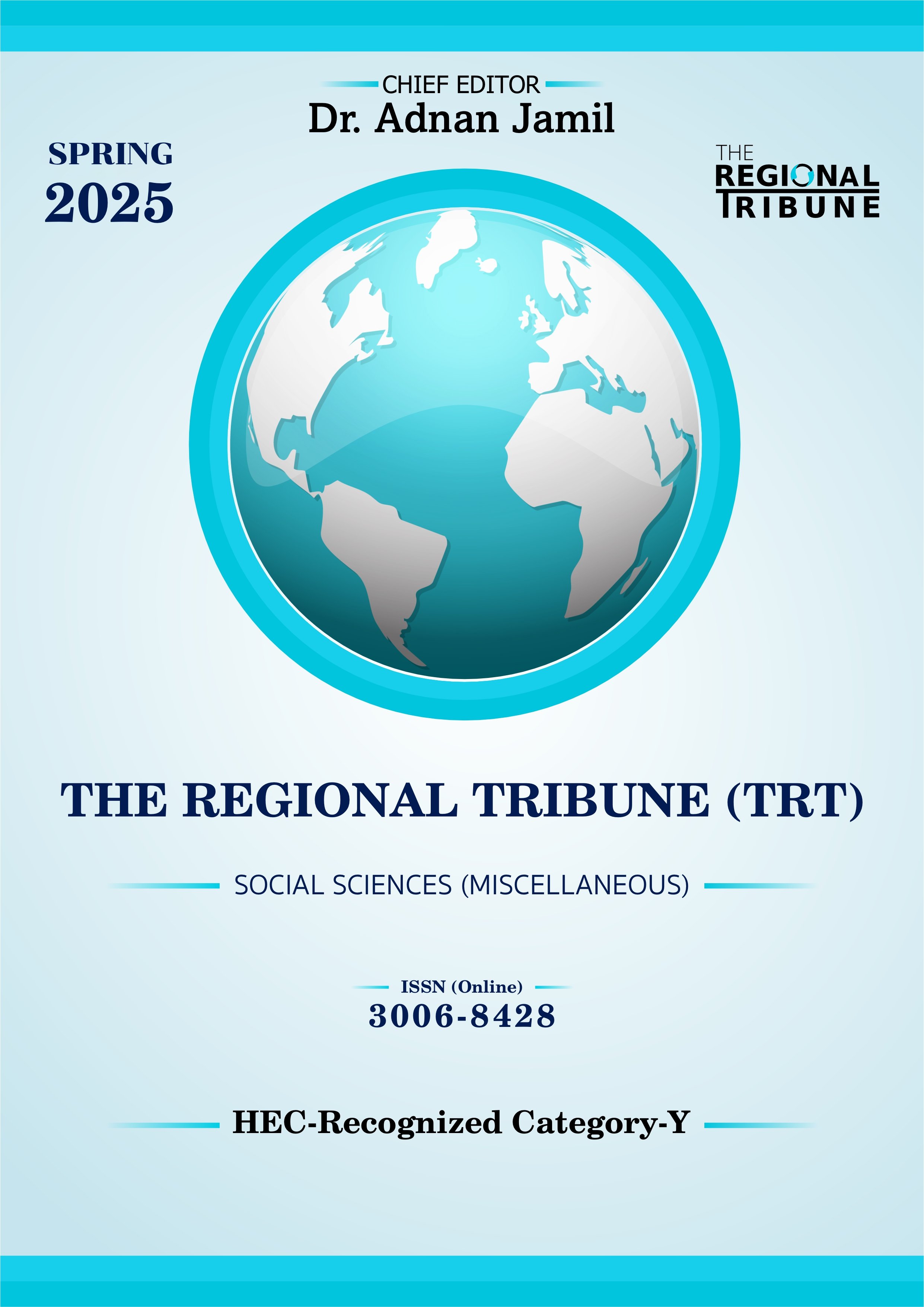Using AI to Predict and Mitigate Green Asset Bubbles in Financial Markets
DOI:
https://doi.org/10.55737/trt/SG25.103Keywords:
Artificial Intelligence, Green Finance, Asset Bubbles, Financial StabilityAbstract
The global financial system is undergoing a profound transformation, driven by the rapid advancement of Artificial Intelligence (AI) and the escalating urgency of climate change. AI technologies—including machine learning, deep learning, and natural language processing—are redefining financial processes by improving efficiency, risk assessment, and decision-making in areas such as algorithmic trading, ESG scoring, and portfolio management. Concurrently, green finance has gained momentum as capital flows increasingly align with environmental sustainability goals, leading to the proliferation of green financial instruments. This study explores the intersection of AI and green finance, with a particular focus on AI’s capacity to detect and mitigate green asset bubbles—instances where environmentally themed assets are overvalued due to speculative investment behavior. The research demonstrates that AI, through tools such as multi-scale confidence indicators and the Phillips–Shi–Yu (PSY) test, offers superior predictive accuracy over traditional econometric models by identifying complex market patterns and shifts in investor sentiment. Theoretically, the findings challenge the Efficient Market Hypothesis and expand agency and behavioral finance theories by illustrating AI’s role in reducing information asymmetry and interpreting market psychology. Practically, AI strengthens risk management frameworks, improves internal controls, and ensures more responsible allocation of sustainable capital. Policy implications include the urgent need for clear AI governance structures, explainable AI mandates, and integration of AI-based risk tools into financial regulation. Addressing concerns around algorithmic bias, privacy, and energy consumption is essential to ensure AI contributes meaningfully to both financial stability and sustainable development.
References
Abbas, Z. (2025). Transforming Financial Forecasting with AI, Machine Learning, and Green Assets in Energy Markets. http://dx.doi.org/10.13140/RG.2.2.26160.47361
Afzal, I. (2025). AI-Driven Fintech Innovations: Unlocking Opportunities in Energy Infrastructure and Sustainable Finance.
Akram, W. (2025). Navigating Energy Markets with AI: The Role of Financial Forecasting and Green Assets.
Arouri, M. M. (2025). Dynamic Connectedness and Hedging Effectiveness Between Green Bonds, ESG Indices, and Traditional Assets. European Financial Management. https://doi.org/10.1111/eufm.12561
Condon, M. (2022). Market myopia's climate bubble. Utah L. Rev. 63. https://scholarship.law.bu.edu/faculty_scholarship/1087
Fani, N. (2025). AI and Machine Learning in Modern Finance: Driving Green Assets and Energy Policy Reform.
Gedikli, A., Sharma, G. D., Erdoğan, S., & Hammoudeh, S. (2024). Artificial intelligence, disruption of financial markets, and the natural resources economy in the digital era. Resources Policy, 92, 104953. https://doi.org/10.1016/j.resourpol.2024.104953
Gür, Y. E., Şimşek, A. İ., & Bulut, E. (2025). Artificial Intelligence-Assisted Machine Learning Methods for Forecasting Green Bond Index: A Comparative Analysis. Ekonomi Politika ve Finans Araştırmaları Dergisi, 9(4), 628-655. https://doi.org/10.30784/epfad.1495757
Han, C., & Yang, L. (2024). Financing and management strategies for expanding green development projects: A case study of energy corporation in China’s renewable energy sector using machine learning (ML) modeling. Sustainability, 16(11), 4338. https://doi.org/10.3390/su16114338
Huynh, T. L. D., Hille, E., & Nasir, M. A. (2020). Diversification in the age of the 4th industrial revolution: The role of artificial intelligence, green bonds and cryptocurrencies. Technological Forecasting and Social Change, 159, 120188. https://doi.org/10.1016/j.techfore.2020.120188
Joseph, O. O.-A. (2025). Reimagining Green Financing with AI: A Technological Approach to Sustainability. J Artif Intell Mach Learn & Data Sci,. 3(1), 2346-2352. http://dx.doi.org/10.51219/AIMLD/Omotoso-Oluwayomi-Joseph/509
Kapar, B. &. (2024). A Dynamic Analysis of Ai Stocks, Tokens, and Defi Assets in a Shifting Financial Landscape.
Lehnert, T. (2023). The green stock market bubble. Circular Economy and Sustainability, 3(3), 1213-1222. https://doi.org/10.1007/s43615-022-00223-4
Li, S., Younas, M. W., Maqsood, U. S., & Zahid, R. A. (2024). Tech for stronger financial market performance: the impact of AI on stock price crash risk in emerging market. International Journal of Emerging Markets. https://doi.org/10.1108/IJOEM-10-2023-1717
Maghyereh, Maghyereh, A., & Abdoh, H. (2022). Can news-based economic sentiment predict bubbles in precious metal markets?. Financial Innovation, 8(1), 35. https://doi.org/10.1186/s40854-022-00341-w
Malik, M. (2025). The Future of Modern Finance: AI-Driven Fraud Detection and Energy Market Forecasting.
Manian, M., & Kaya, P. (2024). Detecting and Forecasting Financial Bubbles in The Indian Stock Market Using Machine Learning Models. Madras School of Economics.
Oko-Odion, C., & Angela, O. (2025). Risk management frameworks for financial institutions in a rapidly changing economic landscape. Int J Sci Res Arch, 14(1), 1182-1204. https://doi.org/10.30574/ijsra.2025.14.1.0155
Omopariola, B., & Aboaba, V. (2021). Advancing financial stability: The role of AI-driven risk assessments in mitigating market uncertainty. Int J Sci Res Arch, 3(2), 254-270. https://doi.org/10.30574/ijsra.2021.3.2.0106
Phillips, P. C., & Shi, S. (2020). Real time monitoring of asset markets: Bubbles and crises. In Handbook of statistics (Vol. 42, pp. 61-80). Elsevier. https://doi.org/10.1016/bs.host.2018.12.002
Sani, A. (2025). AI and Machine Learning in Financial Forecasting: Supporting Sustainable Finance and Energy Policy.
Singireddy, J. (2023). Finance 4.0: Predictive Analytics for Financial Risk Management Using AI. European Journal of Analytics and Artificial Intelligence (EJAAI) p-ISSN 3050-9556 en e-ISSN 3050-9564, 1(1). https://esa-research.com/index.php/ejaai/article/view/30
Tacchini, S. (2024). Forecasting stock market behavior using artificial intelligence [Master's thesis]. Universitat Politècnica de Catalunya. https://hdl.handle.net/2117/404703
Uddin, M. S., Mohamed, O. E. B., & Ebert, J. (2024). Artificial intelligence-powered carbon emissions forecasting: implications for sustainable supply chains and green finance. Energy, Environment, and Economy, 2, 1-13. http://dx.doi.org/10.25163/energy.2110154
Van Eyden, R. G. (2023). Investor sentiment and multi-scale positive and negative stock market bubbles in a panel of G7 countries. Journal of Behavioral and Experimental Finance, 38, 100804. https://doi.org/10.1016/j.jbef.2023.100804
Vuković, D. B.-A. (2025). AI integration in financial services: a systematic review of trends and regulatory challenges. Humanities and Social Sciences Communications, 12(1), 1-29. https://doi.org/10.1057/s41599-025-04850-8
Yang, Y., Huang, C., & Zhang, Y. (2023). Decomposing climate risks in stock markets. International Monetary Fund.
Zarrad, O., & Gafsi, N. (2025). Green Finance and Economic Growth in Emerging Markets: A SWOT Analysis. Journal of Ecohumanism, 4(2), 2579-2595.https://doi.org/10.62754/joe.v4i2.6665
Zheng, T., Zhang, H., & Ye, S. (2024). Monetary policies on green financial markets: Evidence from a multi-moment connectedness network. Energy Economics, 136, 107739. https://doi.org/10.1016/j.eneco.2024.107739
Downloads
Published
Issue
Section
License
Copyright (c) 2025 Dr. Ramla Sadiq, Dr. Farah Yasser, Fatima Nawaz

This work is licensed under a Creative Commons Attribution-NonCommercial 4.0 International License.



